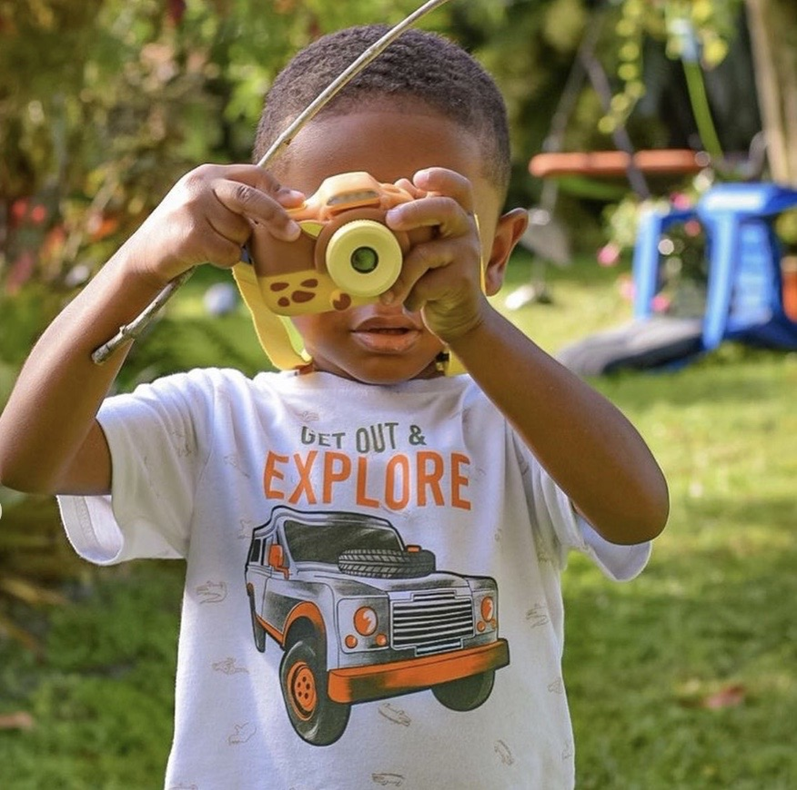
Today's children are surrounded by technology that previous generations could barely imagine. Smartphones, tablets, and connected devices have become as commonplace in nurseries as traditional toys. Yet this digital immersion has created rising challenges for parents seeking to protect their children while preparing them for an increasingly connected future.
Singapore-based kids' technology company, myFirst, founded by engineer and entrepreneur G-Jay Yong in 2017, has risen to the challenge of solving this fundamental tension. The company has successfully developed what may be a blueprint for building safety directly into children's technology rather than adding it as an afterthought.
myFirst now serves over one million families across 36 countries with products ranging from smartwatches to cameras, all designed with safety as a foundational principle. Yong's approach challenges the conventional wisdom that children's technology should simply be adult devices with parental controls attached.
"Most companies approach children's technology by taking existing adult products and trying to make them safer. We start from the opposite direction. We begin with a child's developmental needs and safety requirements, then build the technology around that parameter," explains Yong.
The Architectural Approach to Safety
The beginning of Yong's safety-first philosophy traces back to a simple observation that changed his understanding of technology design. Watching his two-year-old daughter struggle to lift his heavy DSLR camera sparked a realization that the technology industry had created a world that fundamentally excluded children from meaningful participation.
He mentions, "That moment made me realize a very important insight: we expect children to adapt to our devices rather than creating technology that adapts to them. But adaptation isn't just about size or complexity—it's about safety, development, and creating positive relationships with technology from the beginning."
This insight led to Yong's "architectural approach" to safety in children's technology. Rather than implementing restrictions or monitoring systems on top of existing platforms, myFirst designs each product with safety considerations embedded in every component and feature.
Its team of self-described "Super Dads" brings parental perspective directly into the engineering process, ensuring that safety concerns inform technical decisions from the earliest stages of development.
The architectural approach manifests in seemingly simple design choices with profound safety implications. For example, myFirst's CareBuds feature a hard limit of 85 decibels—the maximum volume level recommended by the World Health Organization to prevent hearing damage in children.
Unlike software-based volume controls that can be overridden or malfunction, this limit is built into the hardware itself, making it impossible for children to accidentally damage their hearing regardless of how they use the device.
"Hardware-level safety measures represent a fundamental shift in how we think about protecting children," Yong explains. "Software can be bypassed, settings can be changed, but when safety is built into the physical architecture of a device, it becomes an immutable part of the user experience."
Beyond Restrictions: Designing for Development
Traditional approaches to children's technology safety often rely on restrictions, such as blocking websites, limiting screen time, or disabling certain features. While these measures are critical, Yong argues that they represent a defensive strategy that can inadvertently restrict children's ability to develop healthy relationships with technology.
myFirst's approach focuses instead on developmental safety. According to Yong, this means designing technology that naturally guides children toward positive usage patterns while supporting their cognitive and social development.
The company's smartwatches are an example. This line of kids' smartwatches includes features like customizable geofencing, which allows parents to define safe zones while encouraging children to explore their neighborhoods independently.
The watches also incorporate "Focus Mode," which silences notifications during school hours while maintaining emergency communication channels. Rather than completely cutting children off from technology during educational times, this feature teaches them about appropriate technology use in different contexts.
"Restriction-based safety assumes that technology is inherently harmful and must be limited," Yong observes. "Developmental safety assumes that technology can be beneficial when designed appropriately for the user's developmental stage. The difference is profound—one approach seeks to minimize exposure, while the other seeks to optimize it."
The developmental approach also influences how myFirst handles social connectivity. Rather than isolating children from digital communication, the company created myFirst Circle. This protected social network allows children to share their creativity and connect with family members without exposure to the broader internet. This platform teaches digital citizenship skills within a controlled environment, preparing children for eventual interaction with mainstream social media platforms.
Understanding the Ecosystem Advantage
Perhaps most innovative is myFirst's ecosystem approach to safety. The company's mindset recognizes that children interact with multiple devices throughout their day and that fragmented safety measures can create vulnerabilities. Its products work together through a unified platform that maintains consistent safety standards and parental oversight across all devices.
This comprehensive approach addresses a critical weakness in current children's technology safety: the gap between different products and platforms. Children might have strict safety controls on their tablet but unrestricted access through a gaming device, or protective settings on their home computer that don't extend to school technology.
"Parents today manage safety settings across dozens of different platforms and devices," Yong notes. "Each one has different interfaces, capabilities, and approaches to safety. This fragmentation creates confusion and security gaps that undermine even the most conscientious safety efforts."
Introducing myFirst Circle
Rather than fragmented information from devices or isolating children from digital communication, myFirst created its myFirst Circle. This protected social network allows children to share their creativity and connect with family members without exposure to the broader internet. This platform teaches digital citizenship skills within a controlled environment, preparing children for eventual interaction with mainstream social media platforms.
myFirst Circle serves as the central nervous system for this ecosystem, allowing parents to monitor and manage all connected devices through a single interface. For instance, when a child takes a photo with their myFirst camera, it creates a drawing on their sketch tablet, or receives a message on their smartwatch. All of this activity flows through the same protected environment with consistent privacy and safety protocols.
Data privacy represents another crucial component of the ecosystem advantage. Rather than relying on third-party platforms that may have conflicting privacy policies or business models, myFirst maintains complete control over children's data within its closed system.
"Privacy and functionality don't have to be opposing forces," Yong emphasizes. "The key is designing the ecosystem with privacy as a core principle rather than trying to retrofit privacy protections onto platforms designed for different purposes."
Making the Safety-First Design a Standard
As more young children today get accustomed to technology, myFirst's model for kids' technology was designed to become the new standard. Regulatory developments are beginning to require companies to consider children's safety and development in their design processes rather than treating it as an optional add-on.
Yong sees these regulatory changes as validation of principles that myFirst has been implementing since its founding. The company's rapid growth—notably expanding across 45 U.S. states in hundreds of Walmart and Sam's Club retail locations in time for the 2024 Black Friday season alone—suggests that parents worldwide seek alternatives to the current paradigm.
This demand may eventually pressure larger technology companies to adopt similar safety-first approaches, potentially transforming the broader industry of children's technology.
For myFirst, the goal is beyond creating safer devices. It is preparing a new generation of digital natives who understand technology as a tool for creativity, connection, and learning rather than as a source of anxiety or conflict. This vision positions safety not as a limitation but as the foundation for unlimited digital exploration—a blueprint that may well define the future of children's technology.
ⓒ 2025 TECHTIMES.com All rights reserved. Do not reproduce without permission.




